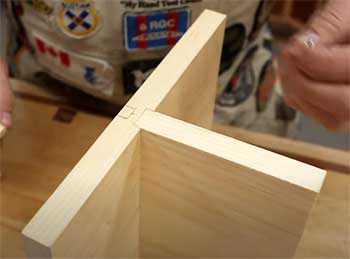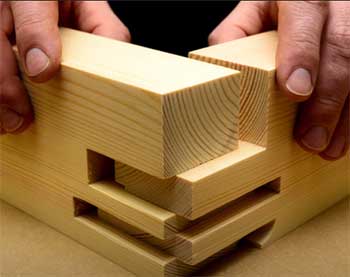Woodworking needs different timber pieces joined together. So, there are various joinery or joining techniques that have been used for hundreds of years by woodworkers.
These joineries allow woodworkers to join timber boards in different creative manners.
Among various common joineries, woodworkers choose one from their arsenal that matches the projected requirement., Dado and pocket screw joints are two widespread and widely used joinery techniques.
Today, we will discuss two different aspects of these joinery techniques and see which one is more convenient to use.
A Quick Comparison Table
Let’s have a quick look at the table below. It indicates the differences between these two joinery techniques.
| Specifications | Dado | Pocket screws |
| Type | Tool-less | Needs drilling and screws |
| Strength | Stronger | Less strong |
| Usage | Furniture, decks, and other woodworking tasks | More used in industrial grade works |
| Application | Tough | Easy |
| Varieties | Three | Four |
| Cost | Cheaper | Expensive |
| Reparability | No | Yes |
Key Differences Between Dado And Pocket Screws
Now that you know the primary differences, let’s discuss them in detail. The differences are from various aspects, and here is the detailed breakdown.
- Joint Type

The first difference between both these joinery techniques comes from their type.
Though both joints supposedly do the same work, the way they work is entirely different.
One channel is cut precisely for dado joints to fit the other piece into that slot. This precision is the key to a strong dado joint.
On the other hand, joint screws involve drill and putting a screw through. First, you must set both wood pieces together and drill an angled hole that goes through both.
Commonly 15-degree holes are strong enough to put the self-tapping screws and join the wood pieces.
- Strength
As I said, both joints supposedly join wood [pieces in the same manner. So, what makes woodworkers choose between one? Of course, a significant factor that helps determine the choice is the strength of both joints.
However, Dado joint seems to have a little upper hand in this matter. As Dado joints function by fitting one wood piece into another, the joints are much stronger as integrated.
On the other hand, Pocket hole joinery attaches woods through drill holes and screws. Pocket screws are not weak by any means. But as they’re not as internally integrated as dado joints, it’s not as strong.
- Usage
Woodworkers use dado and pocket screws to put together wood pieces similarly. However, the usage is pretty different for both.
Dado joints are widely used for dedicated projects like furniture, decks, and other delicate woodworking projects. In short, people use dado joints where visual aesthetics and more strength are necessary.
On the other hand, pocket screws are perfect for commercial and industrial projects. These projects are primarily about joining woods rather than visual pleasure.
Also, in most cases, they don’t need brute strength like furniture or other wood projects.
- Application

No matter how useful a joint is, how you can apply the joint is an important consideration.
Unless the installation is proper, you cannot take the full benefit of a particular joint.
In terms of making joints and applying the dado is pretty straightforward.
However, the tricky part lies in cutting the dado slot with a router or a saw. If the cuts are not super precise, you won’t be able to take the joint correctly.
On the other hand, pocket screws might need to use screws and drill for the hole. However, the precision you need for pocket screws is nothing close to dado joints.
So, in terms of making joints and applying them, pocket screws are much easier to work with.
- Varieties
Every joinery has slightly different versions. These variations allow the joints to work for various projects through different techniques and assembly.
For example, Dado joints have three types: through dado, stopped dado, and half dado joints.
On the other hand, butt joints, miter joints, edge joints, and different thickness joints are four common pocket screw types. More variety on the side of the pocket screw’s end means you’ll be able to cover versatile projects with the joint.
- Cost
The cost of dado and pocket screws will be essential in deciding. So, you can make dado joints using only a saw, router, and glue.
These tools are readily available in every woodworker’s toolbox, whether DIYer or a professional.
On the other hand, you need to buy pocket screws alongside a drill to make the hole. So, in terms of cost, pocket screws take more investment.
- Reparability
Depending on your project, you might need to undo a joint to make some adjustments to disassemble something. In that regard, pocket screws are a better choice as they allow you to disassemble easily.
In addition, you can remove and reattach the screws anytime you want.
However, as dado joints need glue to work correctly, repairing or disassembling is not easy with dado joints. Furthermore, once the joints are complete, they cannot be fixed or undone without damaging the joint.
Which One Will Be The Best Fit For Your House?
After the comparison, it’s time to decide which joint will best fit your woodworking project. As you have seen above, both joints are for different projects.
So, the best fit will vary from man to man. If you want to make a joint within budget and aesthetics matters, you should go for dado joints. Otherwise, pocket screws should be a better overall call. This video also explains how it works!
Frequently Asked Questions (FAQs)
No matter how tempting it is to use pocket screws, there are specific scenarios when you should avoid them. The basic rule of thumb in this matter is to prevent using pocket screws anywhere where they will be visible. Moreover, you should not use pocket screws on breadboards, melamine boards, and timber across the grain.
Pocket screws are one of the most common joining techniques in woodworking. One of the reasons behind this commonness is sheer strength. Pocket strength can hold up to 35% more than similar joints. In addition, they won’t even require any clamp for support, which is an example of the sheer strength of pocket screws.
There has been some debate about how strong pocket holes are compared to mortise and tenon. While some say pockets holes are way stronger than mortise and tenon, others state they are only half as strong as mortise and tenon. But even the half strength of mortise and tenon is quite impressive.
No, pocket screws are not stronger than dowels. Dowel joints are considered superior because of their impressive breaking strength. Per independent testing, pocket screws have an average breaking force of 99 pounds, about 33% less than the dowel’s breaking force of 153 pounds.
Final Words
That’s a wrap for today. I hope my article about Dado and pocket screws comparison was helpful enough to point out the differences between these two joints.
As you have seen, both techniques have their pros and cons. More importantly, both are meant for slightly different projects.
Now that you know about different aspects of these joinery techniques, it’ll be easier to decide which joint to use depending on the project. However, no matter which joint you end up using, it’ll significantly help you to create what you need.
